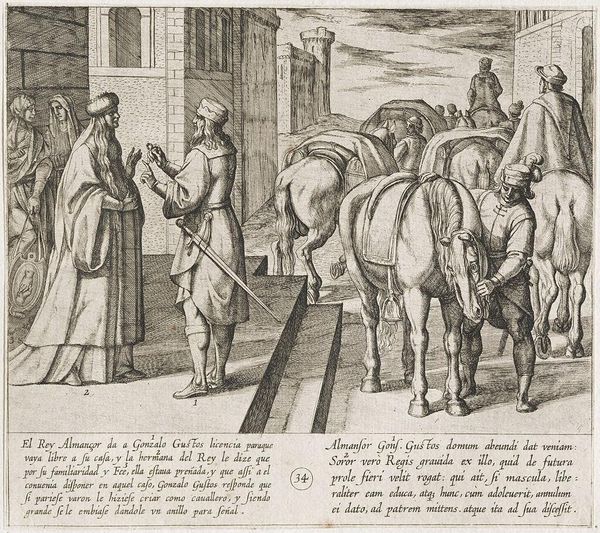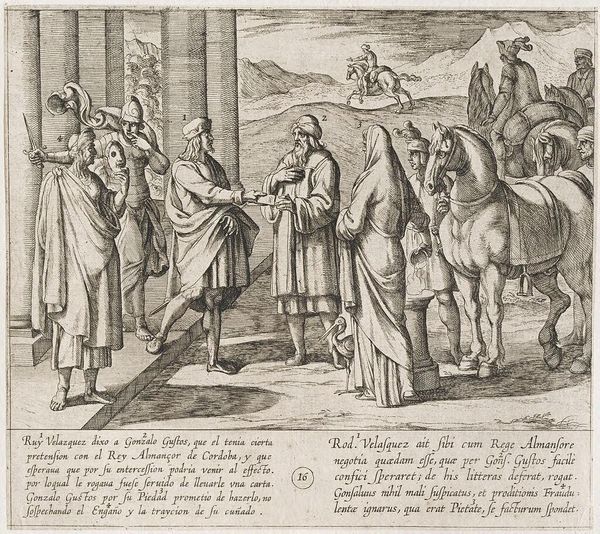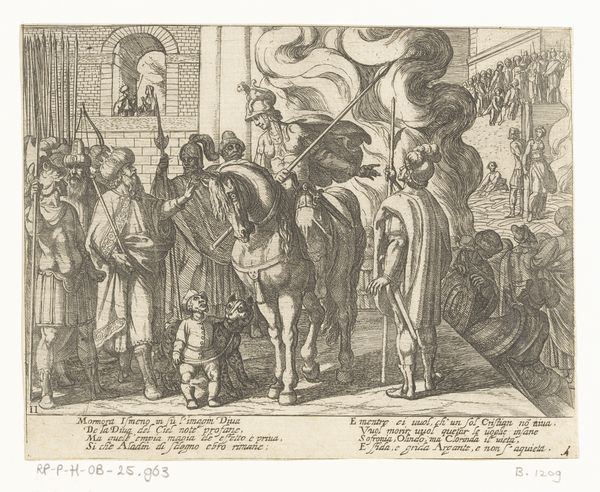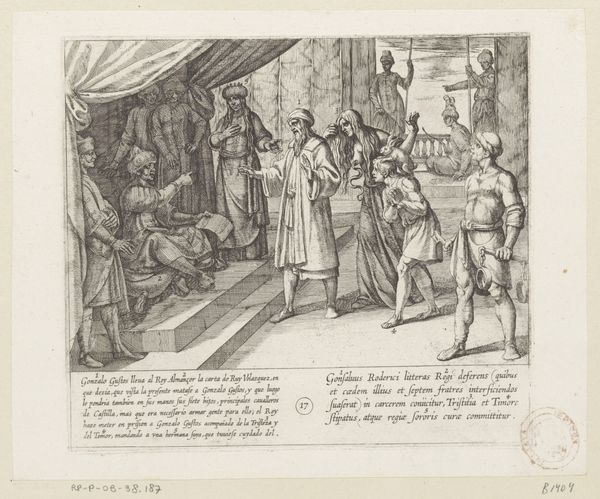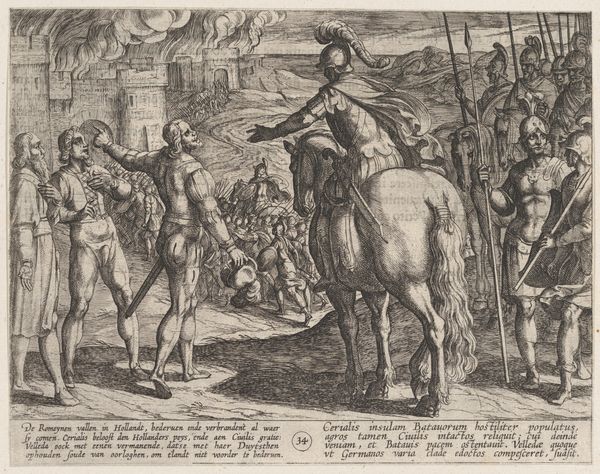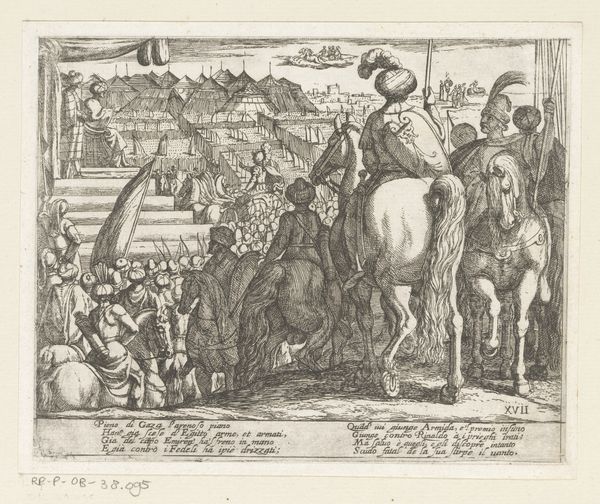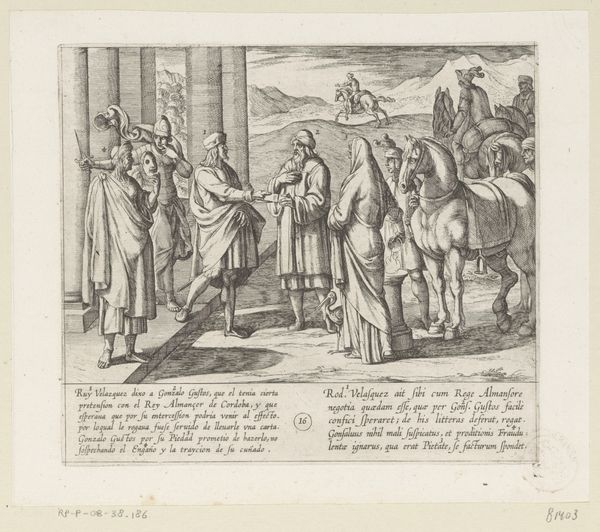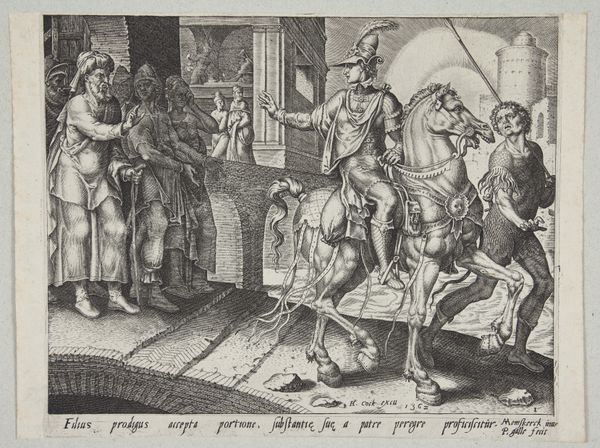
Gonzalo Gusto geeft een ring die aan zijn ongeboren kind gegeven moet worden als het een zoon is 1612
0:00
0:00
print, intaglio, pen, engraving
#
aged paper
#
toned paper
#
light pencil work
#
baroque
# print
#
intaglio
#
pencil sketch
#
old engraving style
#
sketch book
#
personal sketchbook
#
pen-ink sketch
#
sketchbook drawing
#
pen
#
history-painting
#
sketchbook art
#
engraving
Dimensions: height 185 mm, width 206 mm
Copyright: Rijks Museum: Open Domain
Antonio Tempesta created this print, "Gonzalo Gusto gives a ring that must be given to his unborn child if it is a son", sometime between 1555 and 1630. The image depicts a scene of negotiation and anticipation tied to dynastic succession. Made in the context of early modern Europe, the image engages with ideas about lineage, power, and the role of inheritance in shaping social structures. The visual codes of the print, such as the exchange of a ring, carry significant cultural weight, signifying promises and future obligations. This print offers insight into the social values placed on male heirs and the strategies employed to secure their futures within elite circles. It invites us to consider the politics of imagery and the social conditions that shape artistic production. To understand this print more deeply, one could research the history of family structures, gender roles, and inheritance laws in early modern Europe. By exploring such resources, we can gain a richer appreciation for the social and institutional context in which this artwork was created.
Comments
No comments
Be the first to comment and join the conversation on the ultimate creative platform.
